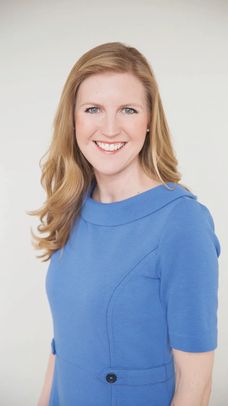
Chasing a Long Winter’s Nap
January 2023
by stephanie hobby
It’s January when precious few hours of daylight spin rapidly into darkness, and we hunker down into the thick of winter. For many, that translates into comfort foods, thick socks, and satisfying winter naps. That longing for more sleep and coziness in extended cold months is a universal human condition. And nobody has that dialed in better than the Scandinavians.
In recent years, their concept of “hygge” has taken hold in the US, which is the idea of living a cozy, contented, healthful life amid dark and frigid seasons. It sounds nice, but scientifically, they are on to something. When surveyed, despite seeing almost no daylight in winter, Scandinavian nations earned top spots on the list of happiest countries. They’re also champion sleepers: a 2019 study by SleepJunkie rated various nations’ work-life balance in relation to quality sleep, and Denmark took third, Norway was fourth, and Sweden came in sixth.
Humans aren’t alone in this. The instinct to slow down, eat more, and conserve energy in darker months spans the animal kingdom. Many animals take that to the extreme through hibernation. And while it might sound great to sleep the winter away, it’s actually a survival mechanism to get through months of food scarcity. Humans have found ways to preserve food and stay warm so we don’t get to take a long winter’s snooze like bears. (Thanks for that, “progress.”)
Sleep, when you think about it, is really weird. Ideally, you should spend a third of your life there as your mind wanders and your body heals. Interestingly, no one knows why we sleep. But it’s crucial. In March 1880, Scientific American posited that one would go insane without shut-eye. And while that might sound a bit dramatic, modern understandings back that claim. In fact, a progressive, highly rare genetic disorder keeps people from sleeping. Sadly - and tellingly - the condition is fatal.
Amanda Abrams-Buerkley is a nurse practitioner at the Sleep and Respiratory Clinic at St. Vincent Healthcare, which offers expert care in a wide range of sleep disorders, from the more common sleep apnea and insomnia to the rare, such as sleepwalking and hallucinations. If you aren’t sleeping well, she urges you to start with your primary care physician to rule out other causes, but if a sleep disorder is suspected, they can provide a referral.
Here’s what ideally happens when you hit the pillow. The five minutes after you drift off, you are in the first, shortest, and most easily disrupted of four stages of non-REM sleep. As you move into the second stage, known as light sleep, your heart rate and breathing slow as your body temperature drops, preparing you to move into the third and fourth stages of deep, or slow-wave, sleep. Your heart and breathing are the slowest of the night, your muscles relax, and your brain activity quiets as your body focuses on restoring itself, building bone and muscle, and strengthening its immune system. As we age, our bodies need less deep sleep than children, who use this stage to grow.
Finally, REM, or rapid-eye movement, starts. This is the most active portion of your sleep cycle, and your brain wave measurements are similar to those taken during waking hours. Your eyes flick back and forth behind closed lids, and your breathing picks up. This is also when things get a little bonkers - your body, as a protective measure to keep you from acting out your dreams and running out into the street - actually puts itself into a state of paralysis. REM is considered important for memory building and categorizing and organizing your thoughts.
A healthy sleeper will run through this complete cycle four to six times a night, but each subsequent cycle shifts more quickly into REM sleep.
Abrams-Buerkley says she sees people who self-medicate with alcohol or other substances to get a better night’s rest, but that often backfires. “Alcohol affects sleep architecture,” she said. “You need all four stages of sleep, but if you have more of one and not enough of the other, your sleep quality will decline.”
So what can you do for better sleep? Start with some habits from the Scandinavians. Embrace the season, light candles, eat comfort foods in moderation, and make time to be active outdoors even when it’s blustery out. Enjoying even a little sunlight helps circadian rhythms, your body’s internal clock responsible for the sleep-wake cycle. Light regulates hormones that encourage sleep, so when it gets dark, we naturally feel sleepier. This is also a good reason to avoid screens for about an hour before bedtime. Blue light mimics sunlight, suppressing melatonin production and telling us to wake up. Speaking of melatonin, Abrams-Buerkley does recommend it but says that using more or buying the most (or least) expensive brand isn’t effective, in her opinion.
Abrams-Buerkley says consistency of sleep habits is key. Listen when your body says it’s time to sleep and wake, and keep regular hours. Have a comfortable, calm sleeping environment, eliminate as much noise and other disturbances as you can, and have a nightly wind-down routine. And if you suspect something is off, call your doctor to check.
“There are a million reasons you could be tired, and one of them is poor sleep,” Abrams-Buerkley said, urging people to seek help sooner rather than wait. “We spend a lot of our time asleep, and if your sleep is not good, it is such a shame because you feel so much better after a good night’s sleep. If you can’t get the best sleep, you’re not living your best life.”
Originally printed in the January 2023 issue of Simply Local Magazine
Never miss an issue, check out SLM's digital editions here!





